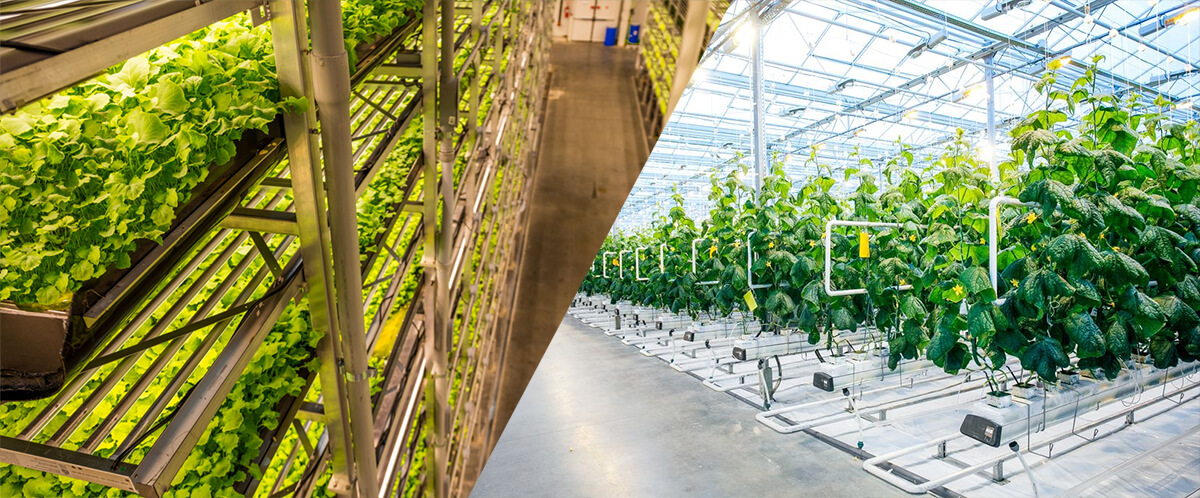Current situation and trend of the global vertical farm and indoor farm market
Author :Charlie Yang September 27

The picture is from the Internet. If there is any infringement, please contact to delete
With the global population increasing and cities continually expanding, various resources will be in short supply. Agricultural cultivation, as the most basic for human life, will certainly take on different forms and development methods.
In some large or super cities in Europe, the United States, and Japan, great progress has been made in vertical farm and indoor farming.
Vertical farm is a means of using a limited land area to develop plant cultivation vertically. Vertical farm cultivation integrates all-digital management of temperature, humidity, carbon dioxide, and nutrient solution. At the same time, through fully artificially lighting source, sufficient lighting cycle and optimized light formula, the crop can grow at a fast speed and obtain the best at the same time. Quality. In the long run, vertical farm can achieve the most crop yields with the smallest land occupation. It is one of the important means for the development of agriculture in human society in the future.
Vertical farm is a form of full indoor cultivation. Indoor cultivation also includes other forms.
1. Fully enclosed greenhouse. Different from traditional glass greenhouse and plastic film greenhouse, fully enclosed greenhouse also uses fully artificial lighting sources and are planted through a fully controllable microclimate. Full indoor planting can be a hydroponic method similar to a vertical farm, growing medium cultivation, or ground cultivation.
2. Cultivation at home and supermarket. At present, some integrated cultivation shelves have appeared in large supermarkets in some European cities. On these shelves, fresh leafy vegetables are growing vigorously. On these racks, there are specially designed LED grow lights to accelerate the growth of green vegetables. Customer can pick the freshest vegetables directly from the planting rack for harvest. The advantages of this form are that, firstly, customers can obtain unparalleled fresh vegetables; secondly, it reduces the cost of intermediate picking and transportation. The application of home cultivation racks is similar to the situation of the above-mentioned supermarket cultivation racks. People can plant in racks in their own homes, but the growers need to master certain skills. At present, home cultivation is still more for enthusiasts to focus on leisure functions. The conditions for widespread popularization are not yet available.
From the above introduction, it can also be seen that artificial lighting is a core technology whether for vertical farm or full indoor cultivation. Artificial grow light has a long history, but the real popularization and large-scale application is only in the past few decades. At present, the most important grow lighting fixtures are HPS (high pressure sodium lamps), fluorescent tubes and LEDs.
High-pressure sodium lamps have been the most widely used before, and many greenhouses and indoor farms are in use. But its principle determines its own limitations and shortcomings. For example, the high-pressure sodium lamp generates huge heat, which is not conducive to the control of the cultivation environment temperature; the spectrum of the high-pressure sodium lamp has limitations, and the spectrum cannot be customized according to the needs of different plants, and so on.
In recent years, with the technological advancement of LED, the improvement of luminous efficiency and the reduction of cost, it will gradually become the protagonist in the field of grow lighting. Some projects in Europe, the United States and China are gradually using LEDs to replace other lighting equipment. In some areas of the United States and Canada, the government not only provides financial subsidies for the replacement of LED grow light, but also stipulates a period of time, all cultivation projects must be replaced with LED grow lights when approaching deadline. It can be seen that LED growing lighting equipment has absolute advantages.
In summary, the main advantages of LED are:
1. Dissipate less heat;
2. Longer operating life;
3. The spectrum can be mixed according to the characteristics of plants;
4. Lower maintenance cost;
and many more
In addition, the medicinal plant market in North America and many European countries is developing rapidly. This kind of high value-added medicinal plants is one of the important reasons for the rapid heating up of the LED plant light market.
The estimated market capacity of the LED grow light market:
According to the analysis of the authoritative network platform, the demand for the LED grow light market has achieved rapid growth in 2020. This is because of the legalization of medical crop cultivation in North America and the rapid increase in its market size. In addition, the 2020 coronavirus disease pandemic will have an increasingly obvious impact on the food supply chain. Many individuals and communities are working hard to build independent cultivation facilities. This also contributes to the rapid development of indoor vertical farms, thereby increasing the demand for replacement and purchase of grow light equipment. According to statistics, the output value of the global LED grow light market in 2020 has increased by 41% year-on-year.
It is estimated that in 2025, the global grow light market capacity will reach to 6 billion U.S. dollars.
As a booming industry, it is bound to be full of increasingly fierce competition.